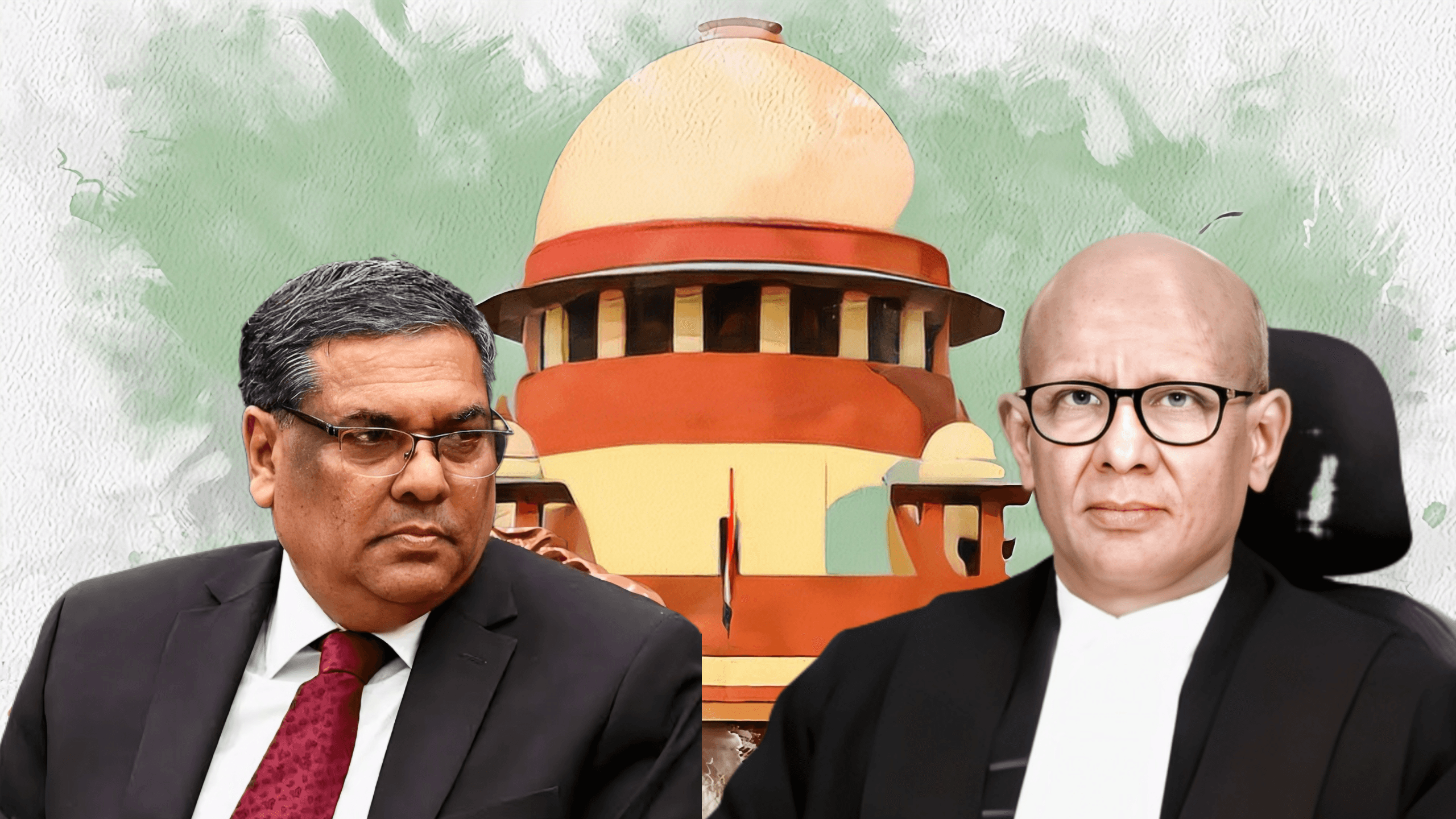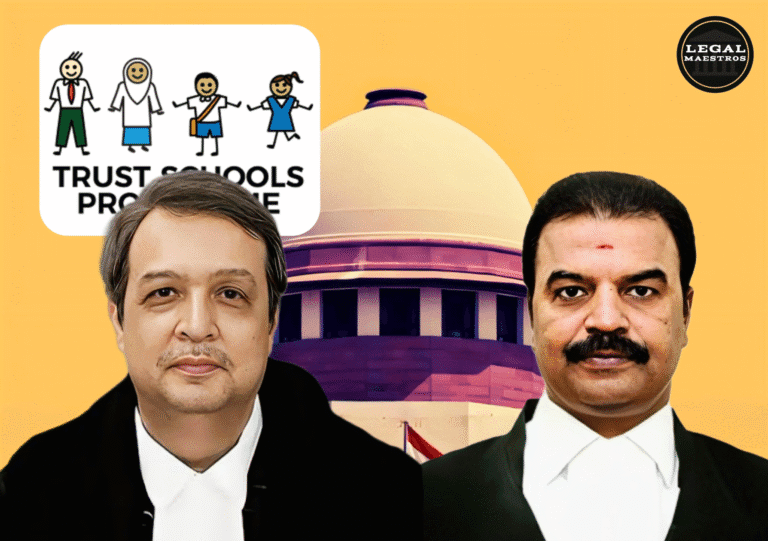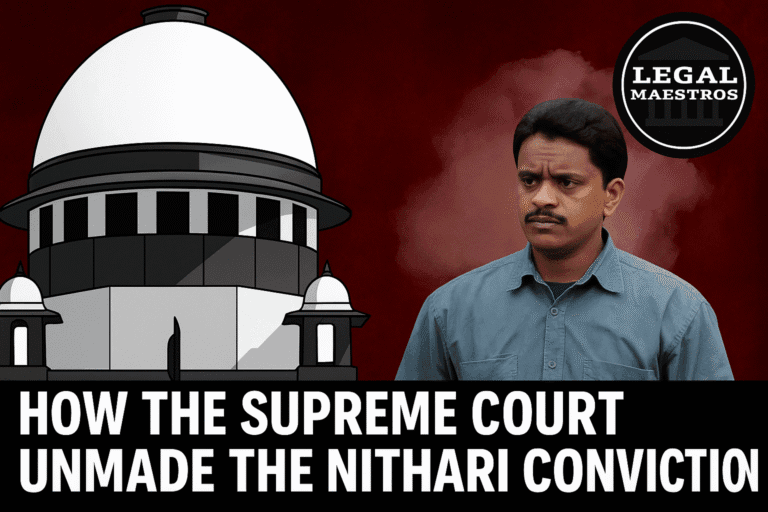
In the case of R. Annamalai v. Lalitha Subanam, which is considered to be a landmark judgment, the Supreme Court of India invoked its exceptional powers under Article 142 of the Constitution to issue a divorce on the grounds that the marriage had irretrievably broken down.
The significance of this case lies in the fact that it underscores the role of the Court in providing comprehensive justice in situations where traditional legal remedies are unable to settle issues that are complicated in nature. On the sixteenth of April, 2025, the verdict was handed down by a division bench that consisted of Justice Sanjiv Khanna and Justice Sanjay Kumar.
An Overview of the Case’s Recent History
On February 14, 2000, R. Annamalai and Lalitha Subanam tied the knot and became husband and wife. The fact that R. Annamalai’s sister married Lalitha Subanam’s brother on the same day adds an interesting dimension to the strong relationship that existed between their families.
For any queries or to publish an article or post or advertisement on our platform, do call at +91 6377460764 or email us at contact@legalmaestros.com.
Nevertheless, after a few years of marriage, problems started to arise, and Lalitha began living apart from her husband in the year 2006. A petition was filed under Section 9 of the Hindu Marriage Act, 1955, which deals with the restitution of conjugal rights, and later under Section 13 of the same act, which deals with divorce.
This resulted in a lengthy series of court actions. For a variety of reasons, both of them were taken out of circulation.
In the meantime, even the other couple, which consisted of the sister of the appellant and the brother of the respondent, were going through their own set of legal battles, despite the fact that they finally came to an agreement.
For any queries or to publish an article or post or advertisement on our platform, do call at +91 6377460764 or email us at contact@legalmaestros.com.
R. Annamalai and Lalitha Subanam finally went their own ways permanently, despite the fact that they engaged in efforts to live together again for a period of time.
A second petition for divorce was submitted by Annamalai in the year 2012, and it was approved by the Family Court in Madurai in the year 2015.
Nevertheless, Lalitha Subanam filed an appeal against this ruling, and in 2019, the High Court in India overturned the divorce order. This resulted in the appeal that is currently being heard by the Supreme Court.
For any queries or to publish an article or post or advertisement on our platform, do call at +91 6377460764 or email us at contact@legalmaestros.com.
The underlying legal problem
The most important question that needed to be answered by the court in this case was whether or not a marriage that had entirely disintegrated and there was no possibility of reconciliation could be legally dissolved, even if the statutory grounds that are required under the Hindu Marriage Act were not properly satisfied.
The solution might be found in Article 142 of the Constitution, which gives the Supreme Court the authority to issue any decree that is required to ensure that a case is dealt with in a manner that is truly just.
The judgment of the Family Court to grant divorce was contested and rejected by the High Court, which resulted in the parties being left in a protracted condition of legal limbo.
For any queries or to publish an article or post or advertisement on our platform, do call at +91 6377460764 or email us at contact@legalmaestros.com.
It was difficult to achieve reconciliation despite the numerous attempts at mediation that were made.
As a result, the case became a paradigmatic illustration of an irretrievably shattered marriage, a term that is not expressly mentioned in the Hindu Marriage Act but that the Supreme Court has addressed in previous rulings by referring to Article 142.
The application of Article 142 of the Constitution
In each matter that is brought before it, the Supreme Court has the authority to issue orders that guarantee “complete justice” thanks to Article 142.
For any queries or to publish an article or post or advertisement on our platform, do call at +91 6377460764 or email us at contact@legalmaestros.com.
In this particular case, the court made the observation that the couple had lost all of their emotional, physical, and functional connections with one another.
The fact that the couple had been living apart for more than a decade, as well as the fact that they had many unsuccessful attempts at mediation and litigation, proved that the marriage was beyond repair.
The Supreme Court of India intervened by utilizing Article 142, despite the fact that the Hindu Marriage Act of 1955 does not include “irretrievable breakdown of marriage” as a basis for divorce in Indian law.
For any queries or to publish an article or post or advertisement on our platform, do call at +91 6377460764 or email us at contact@legalmaestros.com.
When statutory laws are unable to adequately address the intricacies of real-life situations, this demonstrates how constitutional authorities might step in to fill the void.
The Court’s Provisions Regarding Financial Compensation and Directions
The court, in addition to deciding to dissolve the marriage, also set arrangements for the administration of financial justice.
An agreement was reached between the appellant, R. Annamalai, and Lalitha Subanam to pay ₹25,000,000. The court ordered that this sum be placed in front of the Family Court in Madurai within a period of eight weeks that was specified.
For any queries or to publish an article or post or advertisement on our platform, do call at +91 6377460764 or email us at contact@legalmaestros.com.
If there is a delay in payment, interest will be applied at a rate of seven percent per year, compounded yearly, beginning from the day the order was placed until the payment is made.
Not only was this monetary settlement a kind of compensation, but it was also a vital component in the process of establishing justice. Considering the length of time that had passed since the divorce and the subsequent legal proceedings, the court took great care to safeguard the respondent’s financial interests.
Relevance of the Decision in Question
This decision is important in a variety of different ways. In the first place, it strengthens the Supreme Court’s authority to provide substantive justice even in situations where there are limitations imposed by statutes or procedures.
For any queries or to publish an article or post or advertisement on our platform, do call at +91 6377460764 or email us at contact@legalmaestros.com.
The fact that it provides closure to both parties demonstrates that it respects their dignity and understands the emotional and practical reality of a marriage that has ended in divorce.
Second, the decision draws attention to the fact that there is a pressing need for alteration in personal laws so that “irretrievable breakdown” can be recognized as a valid basis for divorce.
There have been several earlier rulings reached by the Supreme Court that have encouraged the legislature to make changes to marital laws; however, such a change has not yet been enacted.
For any queries or to publish an article or post or advertisement on our platform, do call at +91 6377460764 or email us at contact@legalmaestros.com.
In the third place, the decision demonstrates that the Supreme Court is aware of the psychological, social, and legal costs that are associated with long-standing marriage problems.
The idea that marriage should not be a life sentence for either side when it becomes an intolerable relationship is conveyed in a powerful manner by this expression.
The Importance of Mediation and the Boundaries It Possesses
Another thing that this case brings to light is the limitations of mediation in relationships that are badly shattered. Despite the fact that the court attempted to mediate between the parties on many occasions, none of its efforts were successful.
For any queries or to publish an article or post or advertisement on our platform, do call at +91 6377460764 or email us at contact@legalmaestros.com.
This is a reflection of the fact that mediation, although its usefulness in many situations, is not capable of bringing about reconciliation in situations where trust, love, and respect have entirely crumbled away.






![Research Assistantship @ Sahibnoor Singh Sindhu, [Remote; Stipend of Rs. 7.5k; Dec 2025 & Jan 2026]: Apply by Nov 14, 2025!](https://legalmaestros.com/wp-content/uploads/2025/11/Gemini_Generated_Image_s0k4u6s0k4u6s0k4-768x707.png)
![Karanjawala & Co Hiring Freshers for Legal Counsel [Immediate Joining; Full Time Position in Delhi]: Apply Now!](https://legalmaestros.com/wp-content/uploads/2025/11/Gemini_Generated_Image_52f8mg52f8mg52f8-768x711.png)